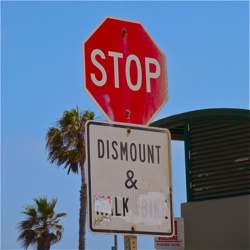Convincing your listeners to stop something is always harder than getting them to buy into a new idea. Bringing a current plan to a halt requires people to admit the idea was bad. Smart people like to be right and will often defend an idea to death. Peer pressure also drives communal thinking, making it even harder to convince a large group that the idea is bad.Whether you are preparing for a round-table meeting, a one-on-one conversation or a pitch to an audience of hundreds, you are most likely trying to answer one of the following four questions:
- What should we do?
- How should we do it?
- Should we do it?
- Why did it happen?
When the answer is STOP, NO or the idea was BAD, you must spend even more time preparing to the presentation. You want the answer to be crystal clear. You want everyone to set aside their pride of ownership and reverse the previous decision. You want to create that “A-Ha” moment where everything comes together, when you take your audience from unaware to action – to influence them to change their behavior and stop something they were doing.
First, you must know you audience and how they feel about the idea. In the past I have written about the 5 questions that will help you define the composition of your audience. If they feel strongly that the idea is correct, you will need build a strong business case.
1. Use Benchmarks
Search for outside sources that support your thought that the idea is bad. Read reputable studies and share white papers that will help convince your listeners. You don’t want to be the only voice of reason.
2. Test the thinking
Start to share the facts with key decision makers prior to the big presentation. Get their reactions and find out if they can be shaped into champions for your cause.
3. Work with the facts
Get the real story. Bad ideas often persist because no one has the facts; the stakeholders are making decisions based on intuition or snippets of the whole story. Be a detective, interview everyone involved and document what is really happening. Find all the qualitative and quantitative facts that cannot be refuted.
4. Predict the future
Show the effects of not stopping. Make everyone feel sick about what could happen if you don’t stop.
5. Give an alternate solution
Stopping anything usually allows you to start something else. Stopping frees up budget, time and emotional investment. All of those things can be put towards other activities. It’s much easier for people to stop if they can start something even better.
These five steps seem simple, but stopping bad ideas is hard work. You may have to have multiple meetings and tailor your pitch to every stakeholder.
Keep up-to-date with Fast Track Tools by subscribing to our blog so you will be the first to know about special, free offers.
